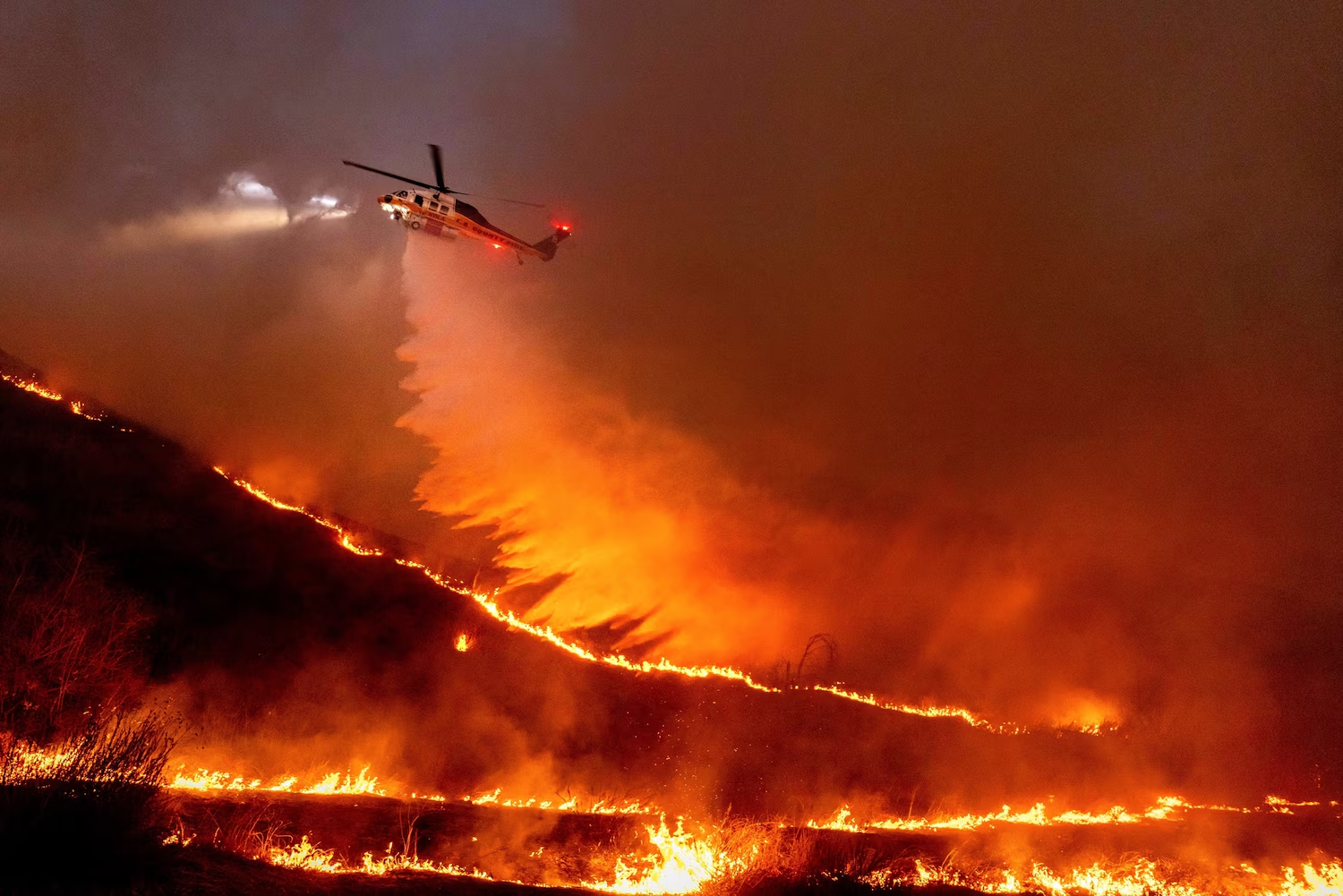On Jan. 7, 2025, the state of California erupted with wildfires all across southern California. The Palisades fire, Eaton fire, Hurst fire, and Kenneth fire have burned a total of 40,300 acres and have destroyed at least 12,300 structures as of Jan. 12. Although the Kenneth fire has been contained, the others still rapidly spread and engulf the surrounding area in flames. With a rise in distress came a rise in remarks blaming the state of California’s governor, Gavin Newsom.
Newsom’s lack of leadership leaves thousands of homeowners not knowing where to sleep tonight. Fire hydrants all throughout the area of southern California are totally empty, providing no water to firefighters un- til they can be refilled. Instead of worrying about clearing brush and dead trees that are easily flammable and cause even more ignition throughout the state’s forests, biodiversity conservation programs in the state of California decided that preserving the habitat of endangered critters was more important to their state than clearing out these bunches of kindle.
Choices of government spark questions among citizens of the United States as they watch thousands of innocent people lose their homes by the minute. Just a month before these fires blazed through California, the Los Angeles Fire Department received a $17.6 million dollar budget cut. Fire Chief Kristin Crawley publicly criticized the city’s budget cuts. Crawley has made several remarks in recent interviews on the fact that they are understaffed and underfunded. Some argue that the budget cut would not have changed the outcome of the fire. However, it is hard to argue that $17.6 million dollars wouldn’t have been able to help in any way or form.
Seeing natural disasters like these make citizens wonder why these funding problems even exist. The inadequate government funding was also seen during the flooding of North Carolina. The state was given around $300 million as immediate relief, and raised $15.5 million for long term recovery. In fiscal year 2024, the United States government spent a total of $6.75 trillion dollars. It is clearly visible to anyone that there is a budgeting issue, leading to underfunding and inability to solve such a disaster.
President Biden sent out $500 million dollars just four days ago (Jan. 8) as a final aid package to Ukraine. The lack of focus on American citizens and the needs in the United States are highlighted during these disastrous times. From Feb. 22, 2024 until now, the war between Ukraine and Russia has swallowed a total of $69.5 billion U.S. dollars. On Jan. 20, president-elect Donald Trump will take office for the second time. Already, Kremlin spokesperson Dmitry Peskov said in early Jan. 2025 that, “After Mr. Trump assumes office, there will be some developments.” Putin and president-elect Trump are already in talks of discussing the future of the war between Russia and Ukraine. The last time President Biden sat down with President Putin was at a summit meeting in Geneva, Switzerland in 2021. New leadership looks to bring brighter days rather than the current situation of avoiding negotiations and dumping billions of dollars as a defense tactic.
Hopefully in the near future, the U.S. government can find a way to efficiently handle these times of catastrophe. For now, citizens have to question the decisions being made that affect the future of our country. If citizens want to see change, this nation must stay informed, stand up, and take action for the common good.













